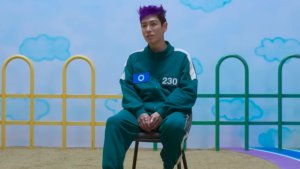 The Editors' Guide to Writing for MDL
The Editors' Guide to Writing for MDL

"Study the past if you were to define the future."
―Confucius―

Korea is a country with many stories, narrating the tales of rulers, warriors, scholars, artists and freedom fighters, who contributed in weaving the rich tapestry of cultural heritage and historical significance that is rooted deeply in the country today.
As an avid watcher of historical dramas, I always end up searching about actual events that may have played a hand in their creation, and that eventually led me to write the predecessor to this article featuring some of the most essential people in Korean history.
Hence, this is the sequel to 'Important Figures in Korean History and Their On-Screen Portrayals'. Just like Part 1, it has been taken into consideration that historical events are often fictionalized in order to be better adapted for the screen. The information within this article is accurate to the best of my knowledge.
Therefore, without further ado, let us dive deep into the sea of time, and let the waves of history carry us back to when life was simpler and yet more difficult; when untarnished loyalties were tested, and nations were formed on the shoulders of brave men and women.

동명성왕 / King Dong Myeong of Goguryeo / (58 BCE – 19 BCE) (R. 37 BCE – 19 BCE)
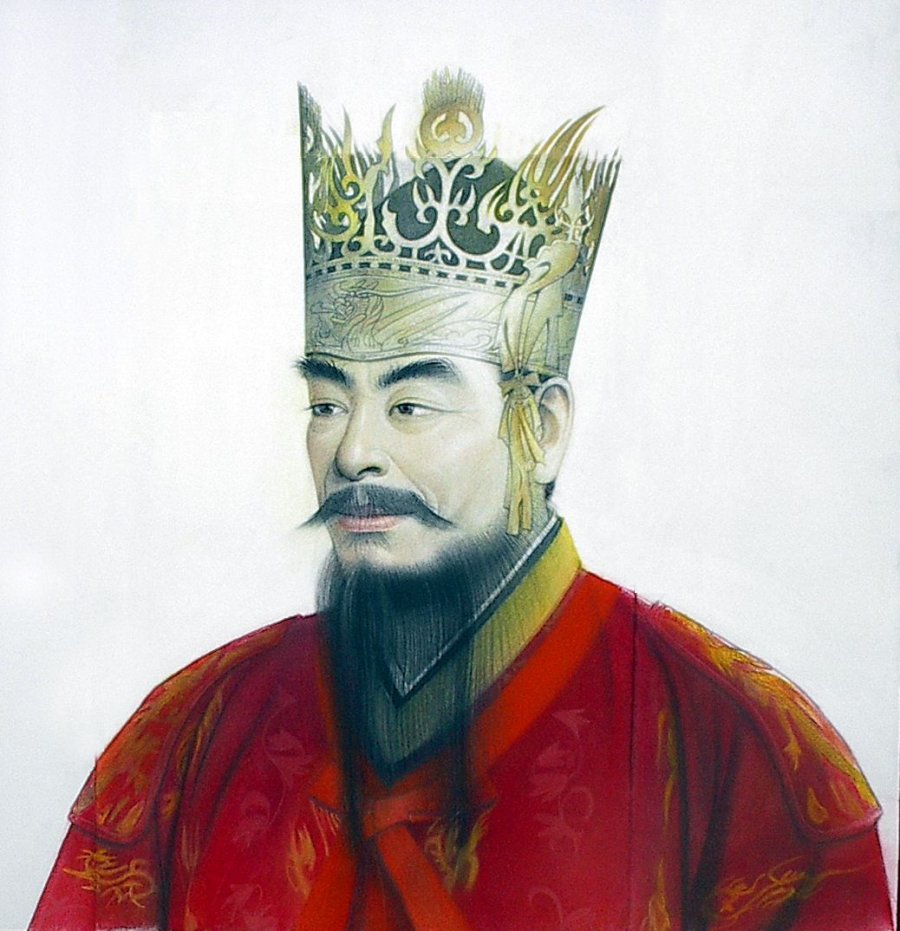 Described as the Holy King of the East, Dong Myeong (more commonly known as Jumong) was the founding king of Goguryeo, the northernmost of the Three Kingdoms of Korea, which eventually became the largest dynasty in Korean history.
Described as the Holy King of the East, Dong Myeong (more commonly known as Jumong) was the founding king of Goguryeo, the northernmost of the Three Kingdoms of Korea, which eventually became the largest dynasty in Korean history.
Also known as the Son of the Heavens, there are numerous mythological tales of Jumong's origins present in various historical texts and even artefacts.
The tales of his birth mostly follow the same basic story. The most widely recognized source of these tales is an ancient stone engraving created by Jumong’s descendants called the Stele of Gwanggaeto the Great. A homage to Goguryeo history, the stone states, “Goguryeo’s founder is Jumong, son of the heavens, whose mother was the daughter of the Water God Habaek.”
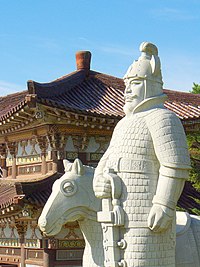
King Jumong is regarded as a benevolent king, a man who was kind and generous towards his people, and a man who established new frontiers through his conquests. Under his rule, the Kingdom of Goguryeo eventually evolved into a great regional territory with considerable power and influence. After his death, his status as a Heavenly Ruler was elevated to that of an ancestral deity, and a temple was erected adjacent to his tomb which served as a means of worship for shamans. King Jumong's tomb still stands today, however, the Temple of Jumong has been lost to history.
Left: Statue of King Dong Myeong at the Tomb of King Dong Myeong in Pyongyang (Present Day Capital of North Korea.)
In Popular Culture/ On Screen Portrayals
Honourable Mention: Portrayed by Lee Deok Hwa in The King of Legend (2010-2011)
Song Il Gook in Jumong (2006-2007)
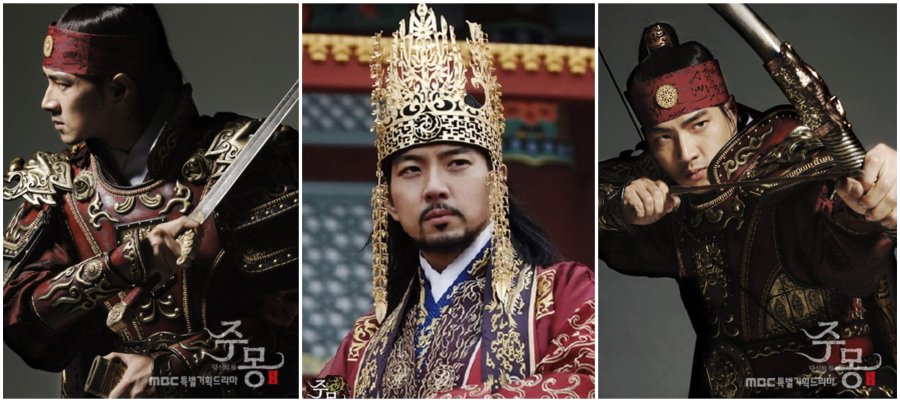
Regarded as one of the key role players in the Hallyu Wave (with ratings exceeding 52% in Korea and around 80% in Iran among other countries), this drama underwent a change in its original 60 episode count due to its immense popularity, resulting in an 81 episode mammoth story that continued to engage viewers from start till the end, and received numerous accolades for its feat in storytelling.
The series took elements from historical records and mythology, and retold the story in a more down-to-earth manner than found in the myths, recounting how Jumong (masterfully portrayed by Song Il Gook), the spoiled stepchild of the Buyeo royal family, embarks on a journey of self-discovery: relaunching the guerrilla fighters' force, becoming a leading figure of Buyeo, and fulfilling his life mission of leading the fight against the oppression of Imperial China; finally establishing himself as the king of the new nation Goguryeo.

박 연 / Bak Yeon / (1378 – 1458)
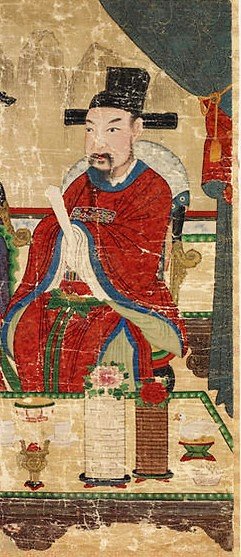 Bak Yeon (also known as Park Yeon) was a court musician of the Joseon dynasty, who adapted the music to the new Confucian philosophy by combining ritual and music.
Bak Yeon (also known as Park Yeon) was a court musician of the Joseon dynasty, who adapted the music to the new Confucian philosophy by combining ritual and music.
Born into a family of government officials in 1378 in Yeongdong, Bak learned how to play the Piri, the Bipa and the Gayageum. He passed his civil service exams at the age of 28. He taught the Grand Prince Chung Nyeong who would later ascend the throne as Sejong the Great. After Sejong became king in 1418, he put Bak in charge of reviving music in the royal court.
During King Sejong's reign, he appealed for the necessity of organizing the imperfect musical instrument coordination, compiling the sheet music, and correctly measuring the notes according to his own predefined 12 notes. Bak's efforts reformed the prospect of court music in general.
Along with Wang San of Goguryeo and Ureuk of Silla, he is considered as one of the three most popular music saints in Korea.
Instruments Bak Yeon had complete mastery over | ||
Piri | Bipa | Gayageum |
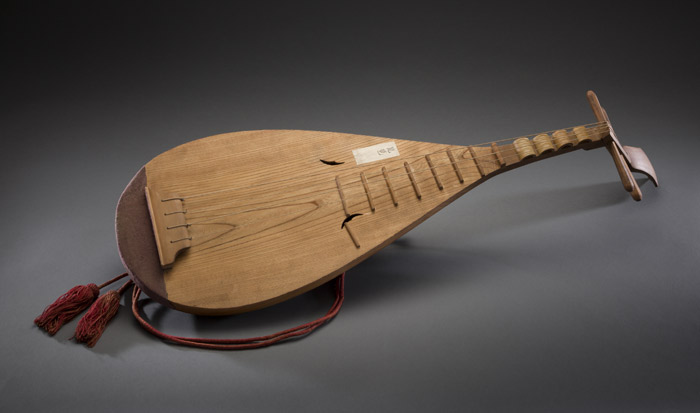 |  Images Source: Korea.Net | |
In Popular Culture/ On Screen Portrayals
Bak Yeon's legacy has been documented and dramatized. The Nangye Temple in Yeongdong (North Chungcheong Province, South Korea) is named after him and hosts a traditional music celebration every October, while his life and achievements are displayed in the Nangye Museum of Traditional Music.
Honourable Mentions:
- Portrayed by Lee Geon-Myeong in Jang Young Sil (2016).
- Yeo Nak, a musical dedicated to Bak Yeon's life story.
Ahn Hyo Seop in Splash Splash LOVE (2015)
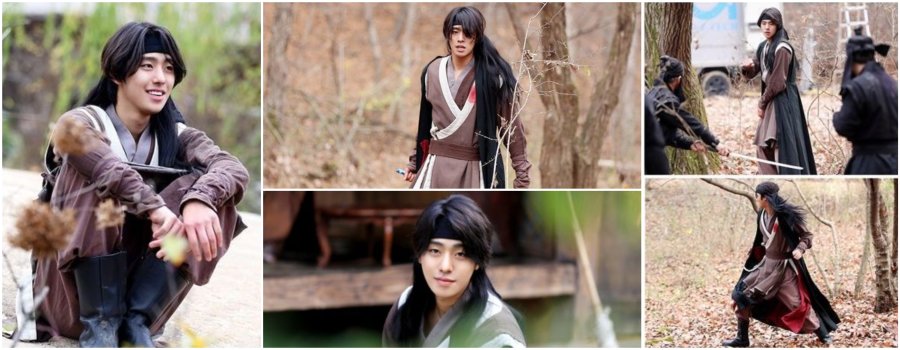
Splash Splash Love is a two-episode story of Dan Bi, a high school student with an irrational fear of mathematics who, in order to escape from taking the CSAT, mysteriously travels through a time portal to the Joseon era. There, she is mistaken as a eunuch and made to serve King Lee Do (Sejong). The events that follow are historically relevant to some extent (like the inventions of that era), while the majority of the drama special is fictional.
Lovable Ahn Hyo Seop wonderfully portrays the character of Bak Yeon in his youth, as a rebellious, passionate young man, who has to keep his musical talents hidden from the rest of the world out of fear of being severely reprimanded, and considered as a disgrace to his family. He is quickly befriended by Dan Bi and helps her on her adventures. Upon realizing his identity, Dan Bi implores him to continue exploring his talents in music which he promises to. | 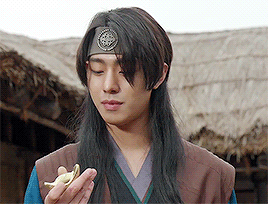 GIF Credits: uaena-vip (Tumblr) |

원경왕후 민씨 / Queen Won Gyeong / (July 29, 1365 – August 18, 1420) / (R. Consort: 1400 – 1418/ Dowager: 1418- 1420)
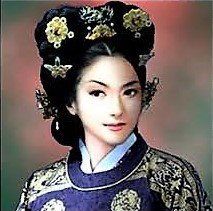 Queen Won Gyeong, also known as Queen Dowager Hudeok, was born as Lady Min Da Kyung, the second daughter of Min Je from the Yeo Heung Min clan. She was the Queen Consort of King Taejong, the third king of the Joseon Dynasty, and the mother of King Sejong the Great.
Queen Won Gyeong, also known as Queen Dowager Hudeok, was born as Lady Min Da Kyung, the second daughter of Min Je from the Yeo Heung Min clan. She was the Queen Consort of King Taejong, the third king of the Joseon Dynasty, and the mother of King Sejong the Great.
Regarded as one of the politically savvy queens among those of Joseon Dynasty, Lady Min was indispensable in her husband Lee Bang Won's (later King Taejong) ascension to the throne.
Even when her husband's political career was about to perish and he was too afraid to do anything about it, Lady Min single-handedly led a coup with her clan members in his favour, ultimately resulting in their victory. This brilliant strategist gave birth to an equally great son (Prince Chungnyeong), who would become one of the greatest rulers in Korean history.
Lady Min's brilliance and resourcefulness resulted in straining her relationship with her husband, as he grew wary of the power and respect she had amassed. Amidst rumours of her mistreatment of the concubines, her place in the Royal Court was threatened, and though she wasn't deposed from her position, her brothers were sentenced to death by the king. The brilliant Lady Min became a victim of her husband's insecurity, and after two years of holding the title of the Grand Empress Dowager, passed away at the age of 56.
In Popular Culture/ On Screen Portrayals
Honourable Mentions:
- Portrayed by Kim Young Ran in The King of Chudong Palace (1983)
- Portrayed by Choi Myung Gil in Tears of the Dragon (1996-1998) and The Great King, Sejong (2008)
- Portrayed by Go Na Eun in Jeong Do Jeon (2014)
- Portrayed by Im Ye Jin in Splash Splash Love (2015)
- Portrayed by Kim Sa Hee in Empire of Lust (2015)
Gong Seung Yeon in Six Flying Dragons (2015-2016)
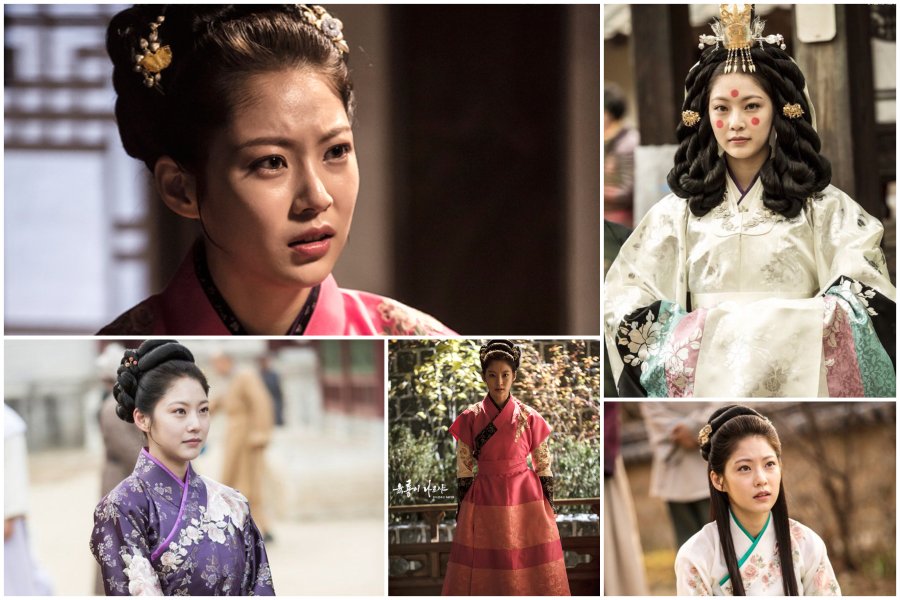
The literal translation of the drama's native title (Korean during the Three Kingdoms Period) means "soar up to the sky". Aptly named, the drama tells the story of the ambitions, success, and conflicts of several historical and fictional people set against the tumultuous backdrop of the foundation of the Joseon Dynasty in Korea,
Gong Seung Yeon portrays the character of Lady Min Da Kyung (later Queen Won Gyeong), an observant and intellectual young woman who is well versed in any and all court politics, and whose intelligence can easily rival that of her husband's (Lee Bang Won: later King Taejong). She is a calm and considerate person, whose resolve to set an example for her people knows no end, even when she encounters adversity in the face of love.
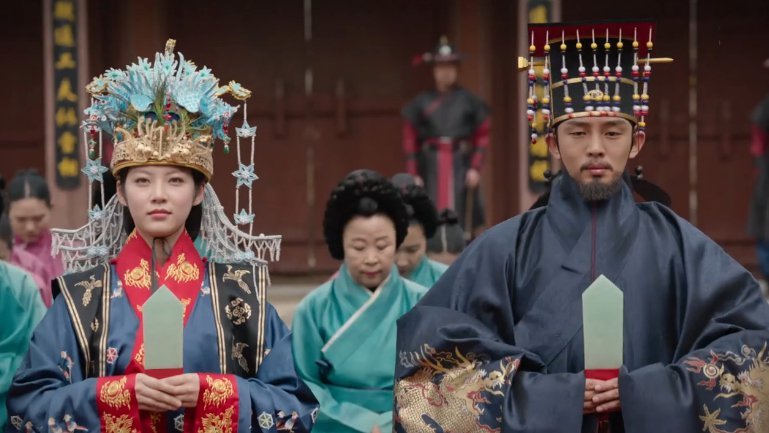

최영 / General Choi Young / (1316-1388)
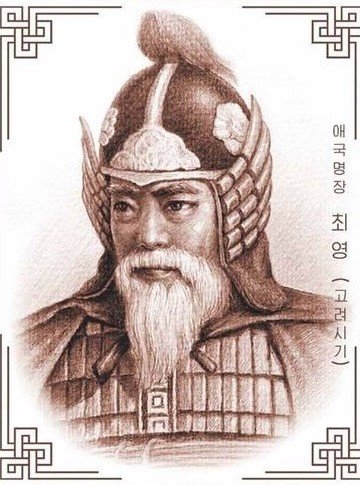 General Choi Young (name also romanized as Choe Young) was born into the prestigious Choi noble clan as the fifth descendant of Choi Yu Cheong, the Grand Scholar of the Royal Academy. He was raised in an austere household befitting that of a Noble aristocratic family of Goryeo. Despite his family's prestigious rank in society, he was always taught to practice humility in his daily proceedings.
General Choi Young (name also romanized as Choe Young) was born into the prestigious Choi noble clan as the fifth descendant of Choi Yu Cheong, the Grand Scholar of the Royal Academy. He was raised in an austere household befitting that of a Noble aristocratic family of Goryeo. Despite his family's prestigious rank in society, he was always taught to practice humility in his daily proceedings.
One of the first lessons he was taught as a child was from his father: “Do not be covetous of gold.” Living to serve his king and country, Choi Young has been viewed as humble, loyal, patriotic, full of integrity, a strong leader, and a great protector during the Goryeo dynasty.
Over the course of his military career, General Choi Young led his army to numerous victories, defeating Japanese raiders, the Red Turbans (Mongols), and the rebel Jo Il Shin, to name a few. He quickly rose up the ranks to that of Commander-in-Chief and even became mayor of Pyongyang.
A staunch believer in eradicating any and all corruption within the government, Choi openly opposed the King's favoured monk Shin Don, who then started propagating false rumours of a potential rebellion to be initiated by the General, which led him to six years in exile. After his reinstatement, he continued his victorious streak in the empire until he suffered defeat in his final battle (and was later beheaded) against a former ally, General Yi Song Gye (who would later become the first emperor of the Joseon dynasty); an unjust end to one of the greatest heroes of Goryeo.
In Popular Culture/ On Screen Portrayals
Honourable Mentions:
- Portrayed by Son Byong Ho in The Great Seer (2012-2013).
- Portrayed by Seo In Seok in Jeong Do Jeon (2014).
- Portrayed by Jeon Guk Hwan in Six Flying Dragons (2015-2016).
Lee Min Ho in Faith (2012)

 The drama tells the story of Yoo Eun Soo, a plastic surgeon who travels back to the Goryeo dynasty through a time portal after a mysterious swordsman kidnaps her during a doctors' conference. This is General Choi Young, Commander of the Woo Dal Chi (the King's personal security force) who takes her as the descendant of the "Heaven's Doctor", a royal physician who had disappeared hundreds of years ago. Thus follows a tale of adventure, love and loyalty which transcends the boundaries of space and time.
The drama tells the story of Yoo Eun Soo, a plastic surgeon who travels back to the Goryeo dynasty through a time portal after a mysterious swordsman kidnaps her during a doctors' conference. This is General Choi Young, Commander of the Woo Dal Chi (the King's personal security force) who takes her as the descendant of the "Heaven's Doctor", a royal physician who had disappeared hundreds of years ago. Thus follows a tale of adventure, love and loyalty which transcends the boundaries of space and time.
Lee Min Ho portrays the character of a youthful General Choi Young, a no-nonsense, quiet, and brooding man. He is an incredibly skilled warrior and strategist, as well as a great leader to his Woo Dal Chi. His personality causes him to undergo frequent clashes with Eun Soo due to her bright, outspoken and bubbly demeanour, is often at his wits' end with her antics, and is constantly pestered when she causes trouble for him (which is most of the time.) Aside from minor nods here and there to actual history, the drama itself is wholly fictional. |  Looking like he's about to drop the latest angsty rock song (I'm all for it.) Looking like he's about to drop the latest angsty rock song (I'm all for it.) GIF credits: asiaren (Soompi Forums) |

김홍도 / Kim Hong Do / (1745-1814 speculated)
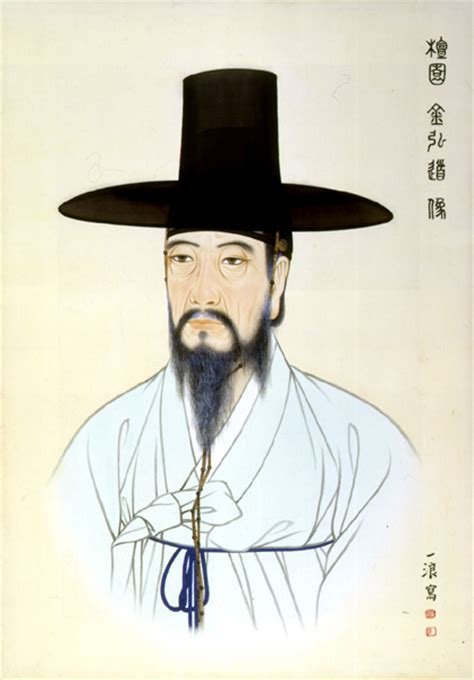 Kim Hong Do, more commonly addressed as Dan Won, was a full-time painter of the Joseon dynasty. He was the pillar of the establishment, and a key figure of initiation of the new trend of his time, the 'true view painting'.
Kim Hong Do, more commonly addressed as Dan Won, was a full-time painter of the Joseon dynasty. He was the pillar of the establishment, and a key figure of initiation of the new trend of his time, the 'true view painting'.
He grew up in present-day Ansan, South Korea. At the age of 7, Kim studied under the renowned master Pyoam Kang Se Hwang, who was then living in seclusion. In 1766, at the age of 21, at his master's recommendation, he entered the royal service as a member of the Dohwaseo, the official painters of the Joseon court. In 1771, he painted the portrait of the Royal Heir (the future King Jeong Jo).
In 1776, he painted the "Nineteen Taoist Immortals", that skyrocketed his reputation as a painter. At the same time, the new instated King Jeong Jo commissioned him for many institutional paintings.
Kim Hong-do was an exceptional artist in every field of traditional painting, even if he is mostly remembered nowadays for his depictions of the everyday life of ordinary people.
He died in loneliness and poverty, though the circumstances and even the year are mostly unknown.
A Collection of Kim Hong Do's Paintings | |||
Literati Paintings: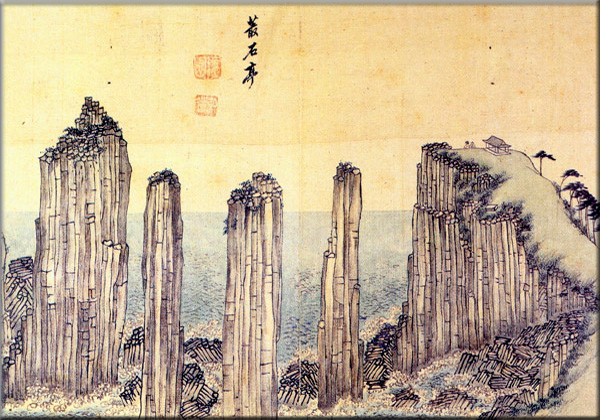 Chong Seok Jong Chong Seok Jong |  Drunkard Under a Tree Drunkard Under a Tree | 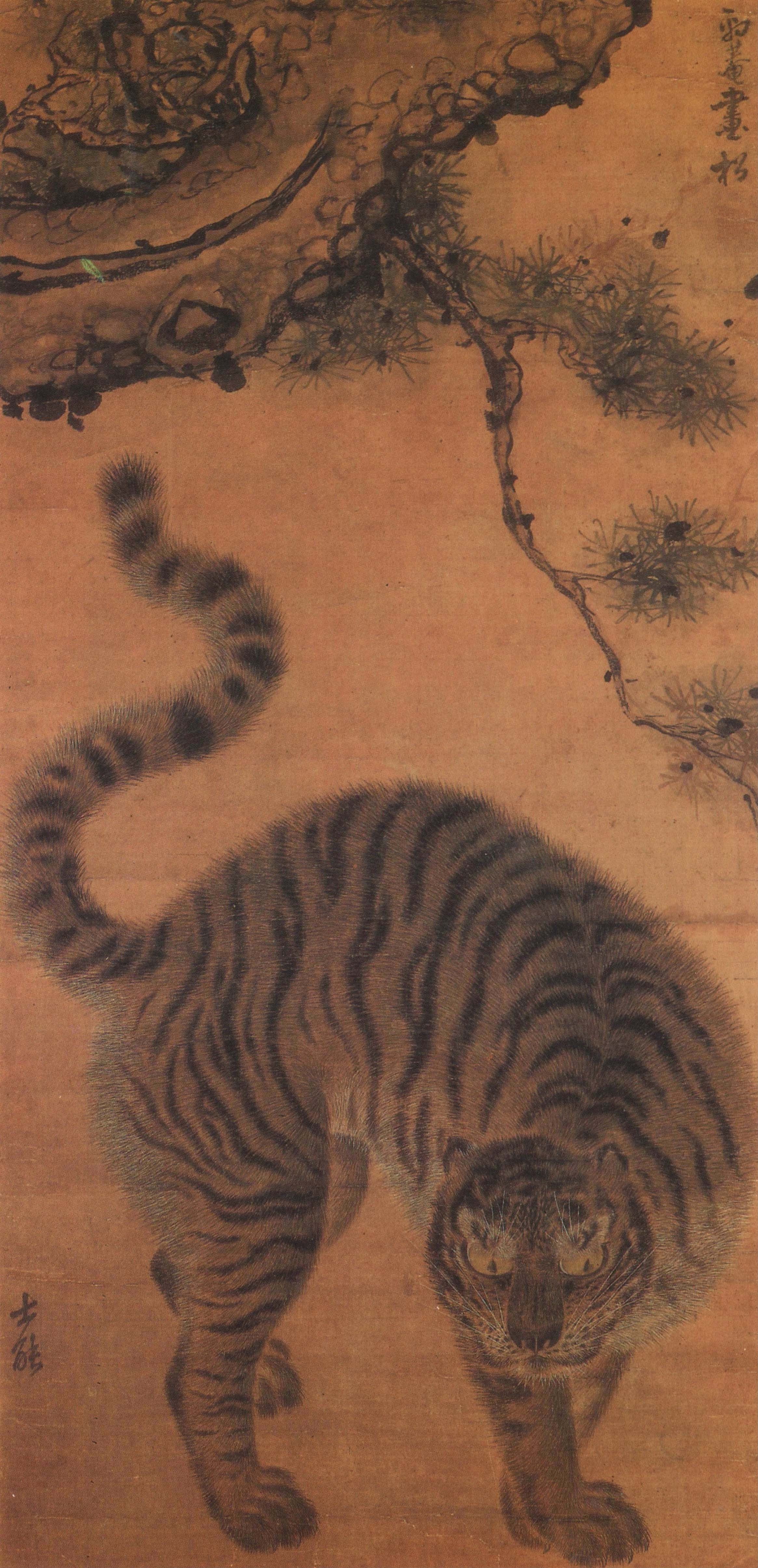 Tiger Under a Pine Tree Tiger Under a Pine Tree | 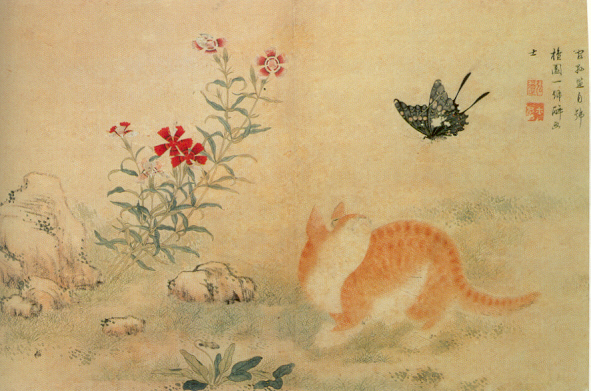 A Cat and a Butterfly A Cat and a Butterfly |
Genre Paintings: Teacher and Pupils Teacher and Pupils | 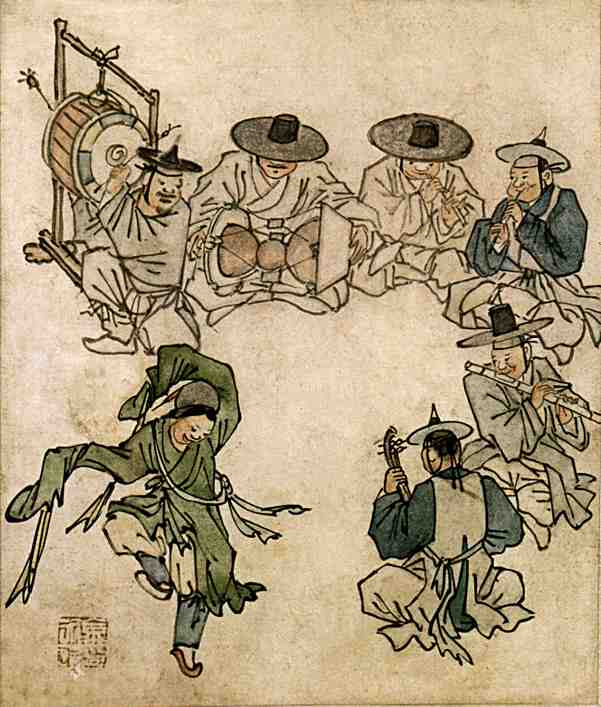 Dancing Boy Dancing Boy |  Washing Place Washing Place |  Forge Forge |
Royal Court Paintings: Kyu Jang Gak Kyu Jang Gak | 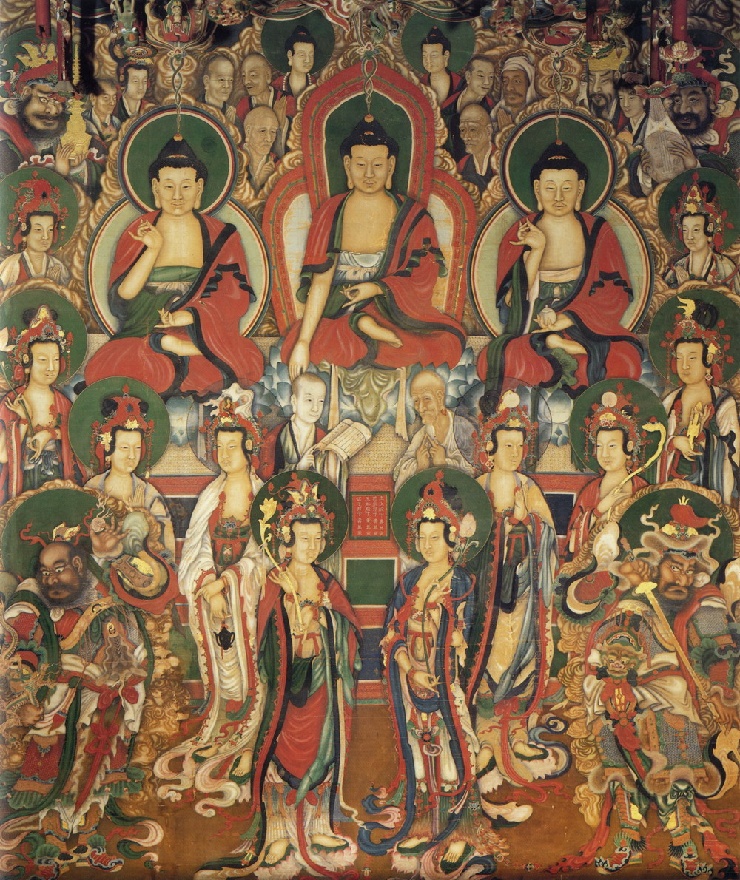 Main Hall of Yong Ju Sa Main Hall of Yong Ju SaSources for all paintings: Wikipedia and Arirang |  Seo Jang Dae Seo Jang Dae |
In Popular Culture/ On Screen Portrayals
Dan Won is remembered today as one of the "Three Wons", together with Hye Won and Owon. He is also often joined to Owon and the 15th-century painter An Gyeon as one of Joseon's three greatest painters.
The city of Ansan, where he spent his youth and learned his craft, has memorialized him in many ways. The district of Danwon-gu is named after him, as is Ansan's annual "Dan Won Art Festival". Many public places have been designed in imitation of his works.
In Korean literature, the novel 'Painter of the Wind' by Lee Jeong Myeong, tells the story of and, is centered on Dan Won and Hye Won, who is portrayed as a woman disguised as a man.
Honourable Mentions:
- Portrayed by Kim Young Ho in Portrait of a Beauty (2008).
- Portrayed by Kim Da Hyun in Warrior Baek Dong Soo (2011).
Park Shin Yang in Painter of the Wind (2008) 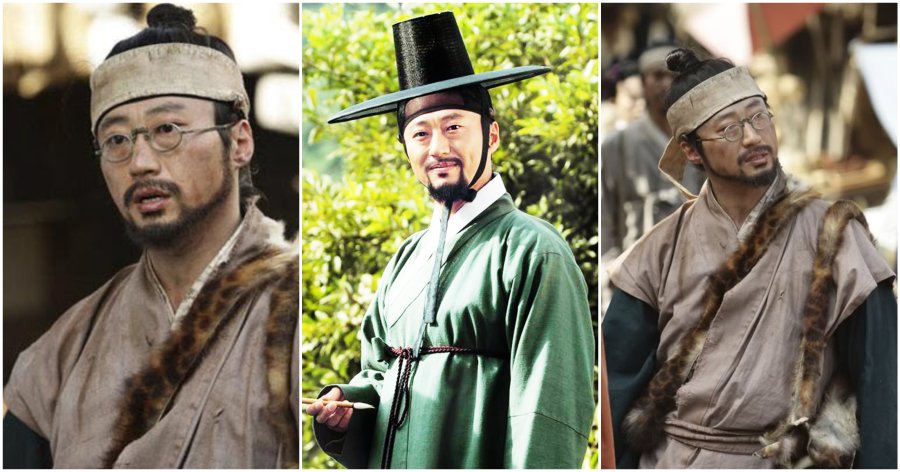
Based on the best-selling novel of the same name, the drama tells the story of Shin Yun Bok, a talented young painter who disguises herself as a man and enters the Royal Court, in order to find out the truth about her father's mysterious death after he (also a painter by profession) was commissioned to the Palace to paint the Crown Prince.
Park Shin Yang portrays the character of Kim Hong Do, a senior member of the Royal Academy of Painting who discovers insurmountable talent in Yun Bok, takes her under his wings, and instructs her on how to polish and hone her abilities. He is an essential figure in Yun Bok's life, as an incredible mentor who stays by his disciple's side come rain or shine.
Fun Fact: Each episode of the drama features (and is loosely centered on) one of Dan Won's actual paintings. Twenty episodes feature twenty seemingly distinct paintings that combine to tell a single tale; the tale of their gifted creator.

헌애 왕후 / Queen Heonae / (964 –January 20, 1029) / (R. Consort: 980- 981/ R. Empress Regent: 997-1009)
 Queen Heonae was born into the Hwang Ju (now a county in North Korea) branch of the royal house of the Kingdom of Goryeo. Her father, Wang Wook, was the eighth son of King Taejo of Goryeo. She was the third Queen Consort of King Gyeong Jeong (the fifth ruler of the Goryeo dynasty), the elder sister of King Seong Jong (the sixth ruler of Goryeo), and the mother of King Mok Jong (the seventh ruler of Goryeo).
Queen Heonae was born into the Hwang Ju (now a county in North Korea) branch of the royal house of the Kingdom of Goryeo. Her father, Wang Wook, was the eighth son of King Taejo of Goryeo. She was the third Queen Consort of King Gyeong Jeong (the fifth ruler of the Goryeo dynasty), the elder sister of King Seong Jong (the sixth ruler of Goryeo), and the mother of King Mok Jong (the seventh ruler of Goryeo).
Having entered the Royal Palace at a time of political strife, Queen Heonae did her best to survive through the storm as numerous attacks (internal and external) were made on her then fragile position in the Palace. When her son, Mok Jong became King in 997, she became the Regent (a person appointed to govern the state because the monarch is a minor, absent or incapacitated). It was then that Queen Heonae, now Empress Cheonchu, exercised her abilities as a stellar politician and ruler, maintaining a decent stronghold over the kingdom and her subjects for almost 12 years (a feat, considering how even regular monarchs were being deposed left, right and center during those times in Goryeo).
Queen Heonae's contributions towards her grandfather's kingdom were not just limited to her role inside the Royal Court. In fact, she was at the forefront with the military in the battle against the Liao Dynasty, strategizing and helping to organize her troops while steadily reclaiming the lost territories of Goryeo. Her increased participation in all court affairs put a strain on her relationship with her brother, the future king, who ultimately succeeded in having her son, King Mok Jong on his side, and the Queen was exiled to Hwang Ju. She returned to the Royal Court in 1029 and passed away at the age of 65.
In Popular Culture/ On Screen Portrayals
Chae Shi Ra and Kim So Eun in The Iron Empress (2009)
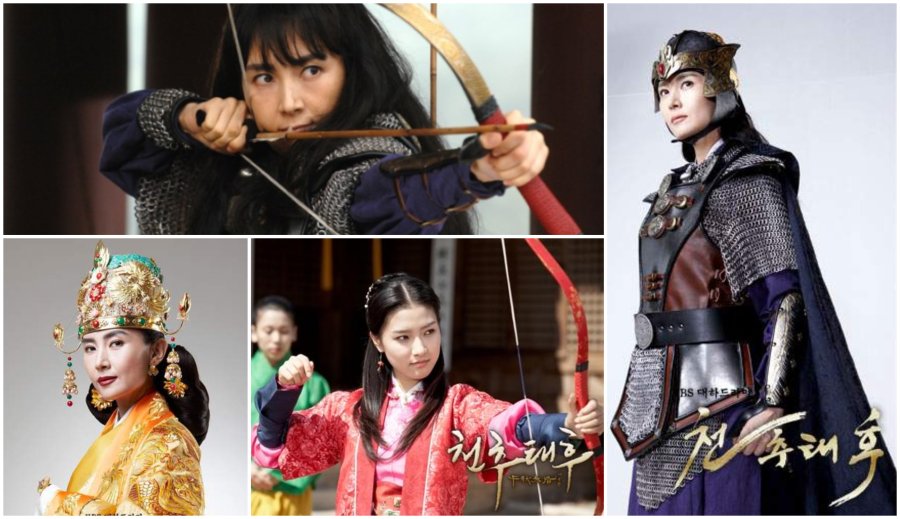
The drama is mostly based on the historical accounts of Queen Heonae's life. It largely revolves around her desire to influence and win back her son (later known as Mok Jong) from her brother Seong Jong, when he decides to have his nephew succeed him as ruler, after deeming her unacceptable to raise the boy in preparation of his future as Emperor. He instead has his barren wife raise the boy as their son.
This causes a lot of conflict between Queen Heonae and her brother despite their continual working together to protect the country from external and internal threats such as the Khitan invasion, and various other royal court intrigues and power struggles.
Kim So Eun portrays the role of young Queen Heonae, a fierce and passionate young woman with a special talent in archery. Despite only being a rookie actress at the time, Kim's performance earned her a lot of praise.
Veteran actress Chae Shi Ra masterfully portrays the role of Queen Heonae and later Empress Cheonchu, a resilient, powerful and fiery ruler who will stop at nothing in order to protect her land and its people, even if it means trampling on her relationship with her lover, her brother, and her son.


이순신 / Admiral Lee Soon Shin / (April 28, 1545 – December 16, 1598)
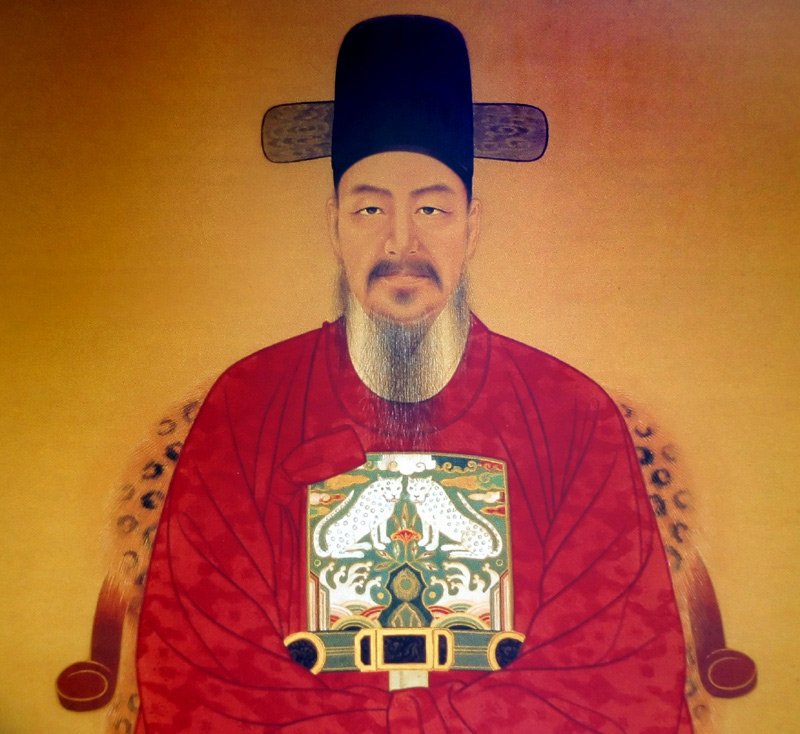 Admiral Lee Soon Shin (sometimes written as Yi Sun Sin) is the national hero of both North and South Korea, and one of the most brilliant naval commanders in history.
Admiral Lee Soon Shin (sometimes written as Yi Sun Sin) is the national hero of both North and South Korea, and one of the most brilliant naval commanders in history.
Born in Geon Cheon-dong Street, Han Seong (present-day Seoul), Lee spent his adolescence and early adulthood period before passing the military examination in Asan (South Chung Cheong Province) where his mother's relatives lived and where now a shrine dedicated to him stands.
As a young boy, Lee played war games with other local boys, showing excellent leadership talent at an early age and constructed his own bow and fletched his own arrows as a teenager. He also became proficient in reading and writing Hanmun (Chinese characters incorporated into the Korean language with Korean pronunciation).
His excellence in military strategy got him enrolled in a prestigious military academy, and upon graduation, was assigned to defend the Northern Frontier against the Jurchens (Chinese tribesman of the Ming Dynasty), who were constantly invading Korean lands and pillaging villages. This allowed Lee to earn valuable combat, leadership and tactical experience while fending the country against marauders and led him to capture their leader.
While this was a huge victory for Korea, Lee's commanding officer was envious of him stealing all the thunder, hence he initiated a false rumour that Lee had deserted his army during the final victorious battle. Lee's reward for being a hero to the Korean people was that he was arrested, stripped of his rank and tortured within an inch of his life. When he was finally released from jail, he re-enlisted as a lowly Private.
However, within a few months of re-joining the army, Lee found himself steadily rising back through the ranks, thanks in large part to his extraordinary abilities. In virtually no time he was appointed as the commandant of a prestigious military academy, and a few months later was awarded the rank of Admiral, and assigned command of a large naval district. He was also charged with the buildup of the Korean Navy, which he took to with great diligence.
Despite the fact that he had no prior naval training, Admiral Lee was never defeated at sea nor lost a single ship under his command to enemy action. He was bestowed with the posthumous title of Chungmugong, which is now the highest military honour bestowed to any soldier in South Korea.
Admiral Lee's statue at Sejongno, Seoul.
In Popular Culture/ On Screen Portrayals
Admiral Lee's life story has been adapted for both film and television while serving as the inspiration for other media. The poetic, first-person narrative novel, Song of the Sword by Kim Hoon, earned its writer the prestigious Dongin Literature Award. Admiral Lee has also made appearances in various video games as a playable character, and as the protagonist in various comic books. Honourable Mentions:
Korean 100 won silver coin in commemoration of Admiral Lee. (1970) |  "Those willing to die will live, and those willing to live will die." "Those willing to die will live, and those willing to live will die."― Admiral Lee |
Choi Min Sik in The Admiral: Roaring Currents (2014)
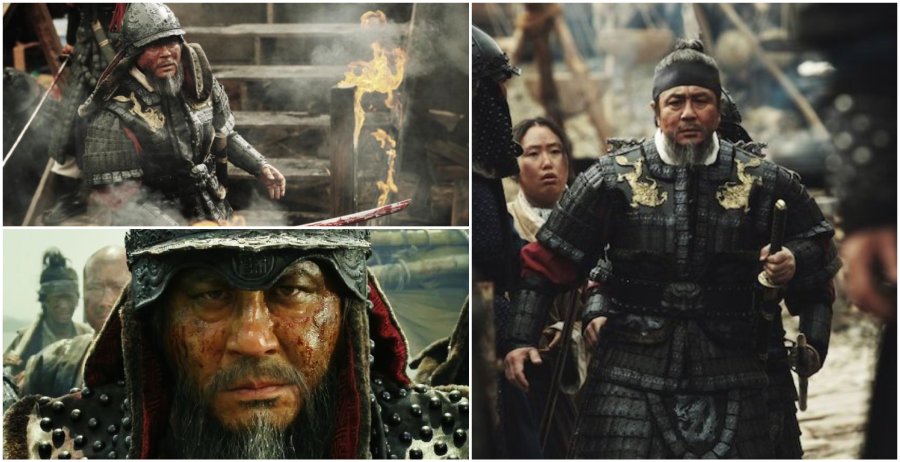
Revolving around the titular Battle of Myeongnyang (native title) in 1597, this is a naval war film that set the record for the fastest number of viewers in the shortest amount of time. The battle, regarded as one of legendary Joseon admiral Lee Soo Shin's most remarkable naval victories, in which he led the only 12 ships remaining in his command to a heroic victory against an invading Japanese fleet numbering 333 vessels, is depicted with painstaking detail.
Veteran actor Choi Min Sik won five 'Best Actor' and the 'Daesang' (Grand Prize) awards for his outstanding portrayal of Admiral Lee, with critics commenting that he breathed life into his character through his portrayal of emotions, pain and genuine loyalty for his cause.

대 장금 / The Great Jang Geum / (15th Century CE- 16th Century CE)
Jang Geum was reputedly the first female Royal Physician in Korean history. She was mentioned 10 times in the Annals of the Joseon Dynasty. Through the journal-esque entries in the annals, it is known that Jang Geum possessed great abilities as a physician. Her expertise lay from General Medicine all the way to Gynaecology. It is also known that King Jung Jong (11th King of Joseon Dynasty) was pleased with Jang Geum's medical knowledge and trusted her with taking care of the royal family. Henceforth, she became the third highest-ranking officer in the Court and was granted the use of Dae, which means "great" in Korean, before her first name. However, due to there being very little information pertaining to Jang Geum's own personal life, some sources attest to her existence as a real person and it is still a topic of debate among scholars. | 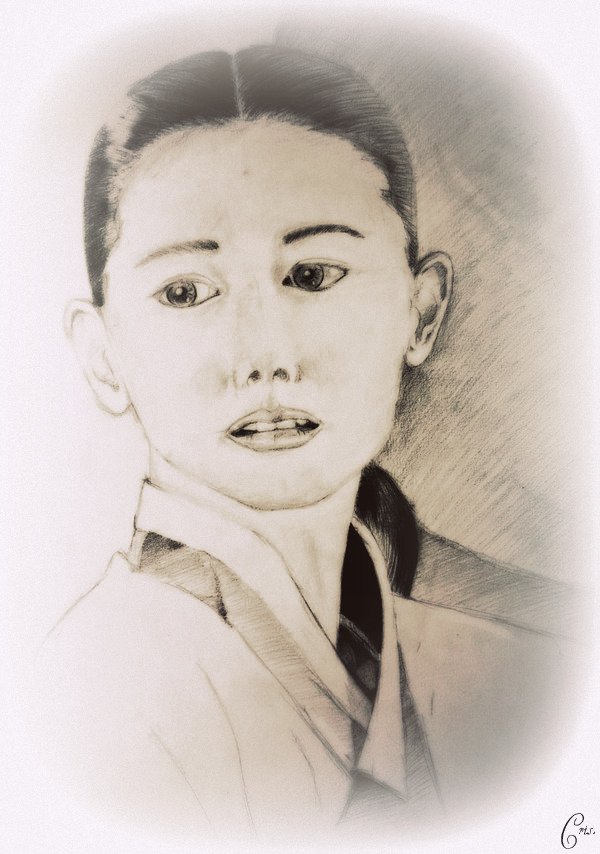 Note: Due to the complete lack of actual portraits, the writer chose to include a sketch of Dae Jang Geum from the television series. Image Credits: dr4wing-pencil on Deviantart. Note: Due to the complete lack of actual portraits, the writer chose to include a sketch of Dae Jang Geum from the television series. Image Credits: dr4wing-pencil on Deviantart. |
In Popular Culture/ On Screen Portrayals
Jang Geum was mentioned in a book titled "Yi Dynasty Medical Officer's Journal". The following is text regarding Jang Geum's origins and achievements, as recorded in the medical journal.
"Medical Lady Jang Geum, whose origins cannot be traced, received the right to be called "Dae Jang Geum" under an edict issued by the 11th King of Korea, Jung Jong, in the 18th year of his reign (1524-1525). At that time, there was no precedent of a Medical Lady treating a King, but the King trusted in Jang Geum's method of treating illness with food. Jang Geum, with the granting of the right to use "Dae" in her name, is certainly an epic lady whose name will be recorded in the history books."
Lee Young Ae in Jewel in the Palace (2003-2004)
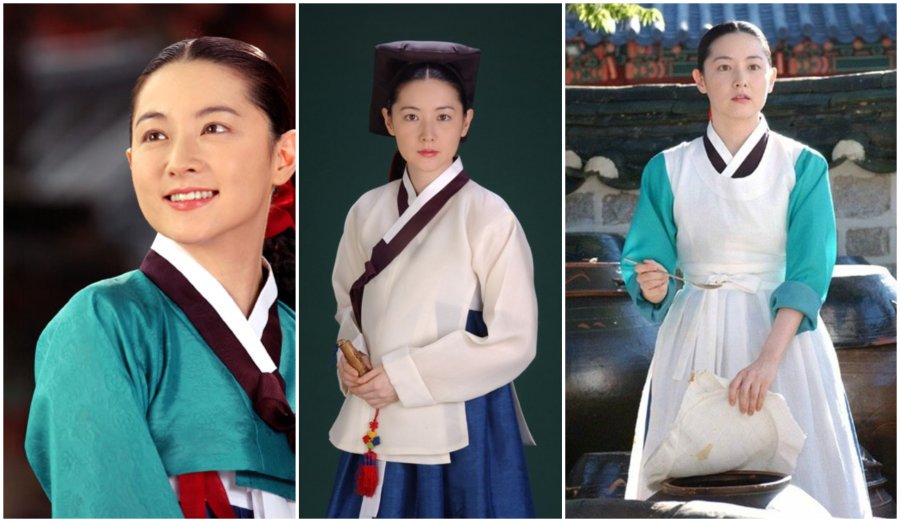 One of the primary proponents of the Hallyu Wave (with an average viewership rating of 46.3% and a peak rating of 57.8%), Dae Jang Geum (native title) took not just all of Korea, but most of the world by storm, having been exported to 91 countries. The drama tells the tale of an orphaned kitchen cook who went on to become the king's first female physician in a time when women held little influence in society.
One of the primary proponents of the Hallyu Wave (with an average viewership rating of 46.3% and a peak rating of 57.8%), Dae Jang Geum (native title) took not just all of Korea, but most of the world by storm, having been exported to 91 countries. The drama tells the tale of an orphaned kitchen cook who went on to become the king's first female physician in a time when women held little influence in society.
Lee Young Ae stars as the titular character Jang Geum, an 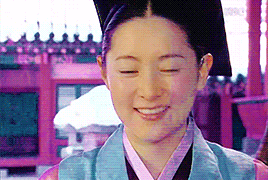 intelligent, beautiful and extroverted woman whose outgoing nature and enthusiasm allow her to stand out from the crowd. Being strong-willed, she strives to reach her goal regardless of obstacles, with her extraordinary medical skills and knowledge, as well as her integrity and high ethics to only use her knowledge to heal and cure people. She becomes the first female physician to the king and is named Dae ("The Great") Jang Geum, as well as becoming a third-ranked official, something unheard of at the time for a woman during the Joseon era.
intelligent, beautiful and extroverted woman whose outgoing nature and enthusiasm allow her to stand out from the crowd. Being strong-willed, she strives to reach her goal regardless of obstacles, with her extraordinary medical skills and knowledge, as well as her integrity and high ethics to only use her knowledge to heal and cure people. She becomes the first female physician to the king and is named Dae ("The Great") Jang Geum, as well as becoming a third-ranked official, something unheard of at the time for a woman during the Joseon era.








